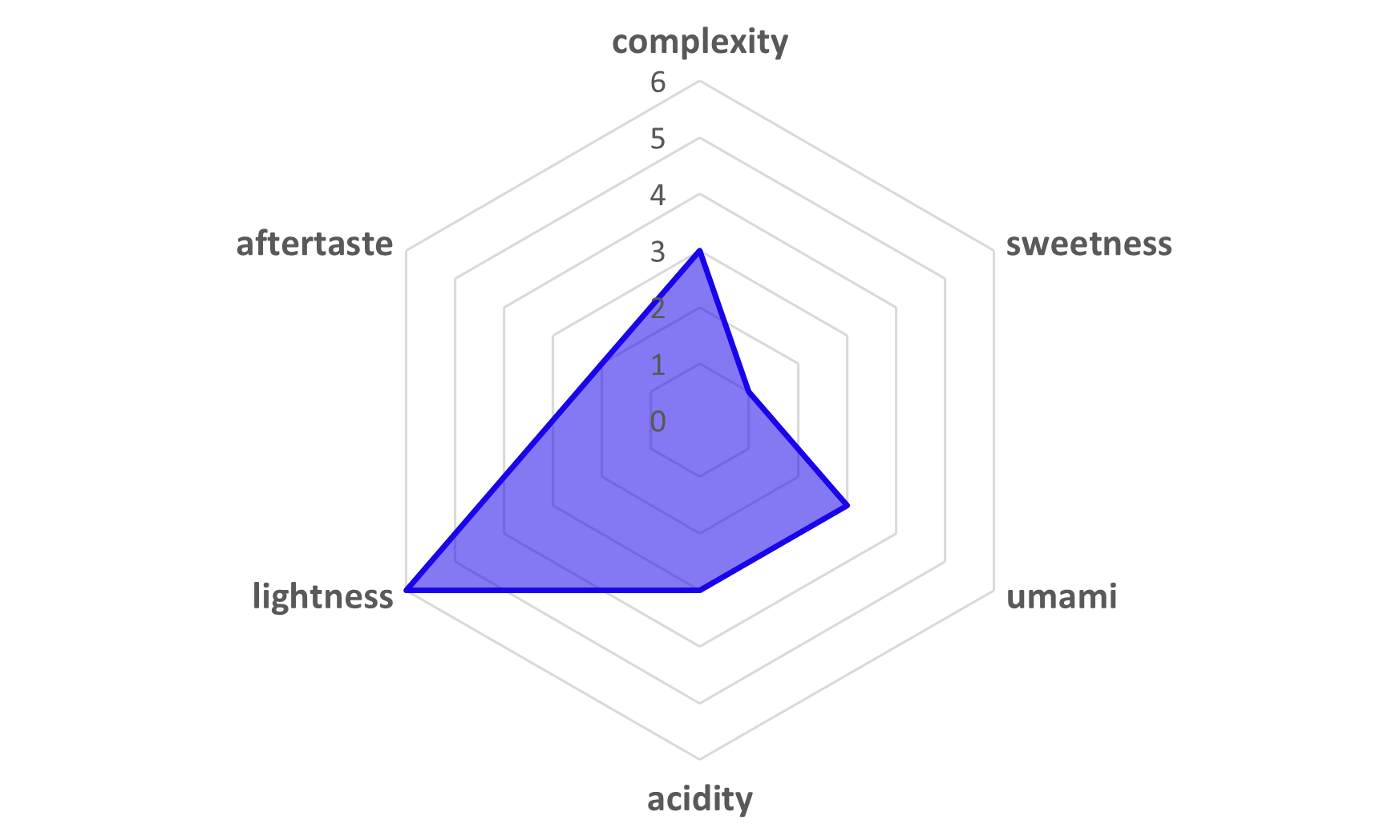N/A
un indicateur de la douceur ou de la sécheresse du saké. En général, une valeur négative indique la douceur, tandis qu'une valeur positive indique la sécheresse.
Expression numérique de la quantité totale d'acidité. Plus l'acidité est élevée, plus il est vif et corsé, plus l'acidité est faible, plus il est léger et doux.
Proportion de riz restant après le grattage de la couche extérieure. L'élimination de la couche superficielle permet de produire un saké à l'arôme unique et sans 'impuretés.
"The intense greenness of green apple and the coolness of freshly picked pepper, to which a gentle dairy note arrives a little later, creating a familiarity. The taste is as youthful as the aroma, with an infinitesimally low sweetness. There is no long surface aftertaste. It has a powerful sharpness and prepares the palate for any genre of meal before moving on to the next dish."
Professional French Chief & YUKARI Special Ambassador
"The nose is based on youthful yellow apple notes, blending with a hint of banana, a refreshing saffille, radish, minerals, fresh cream and notes of cereal grains, corn and chestnuts derived from the raw material. There is a slight sense of maturity. The palate starts with a soft sweetness, which is smoothly balanced by a clean acidity and a soft umami flavour, with a powerful, dry finish. Recommended temperature range: below 10°C. Serve strongly chilled in straight ceramic glasses."
Sommelier of Sake / Sake Diploma & YUKARI Special Ambassador








